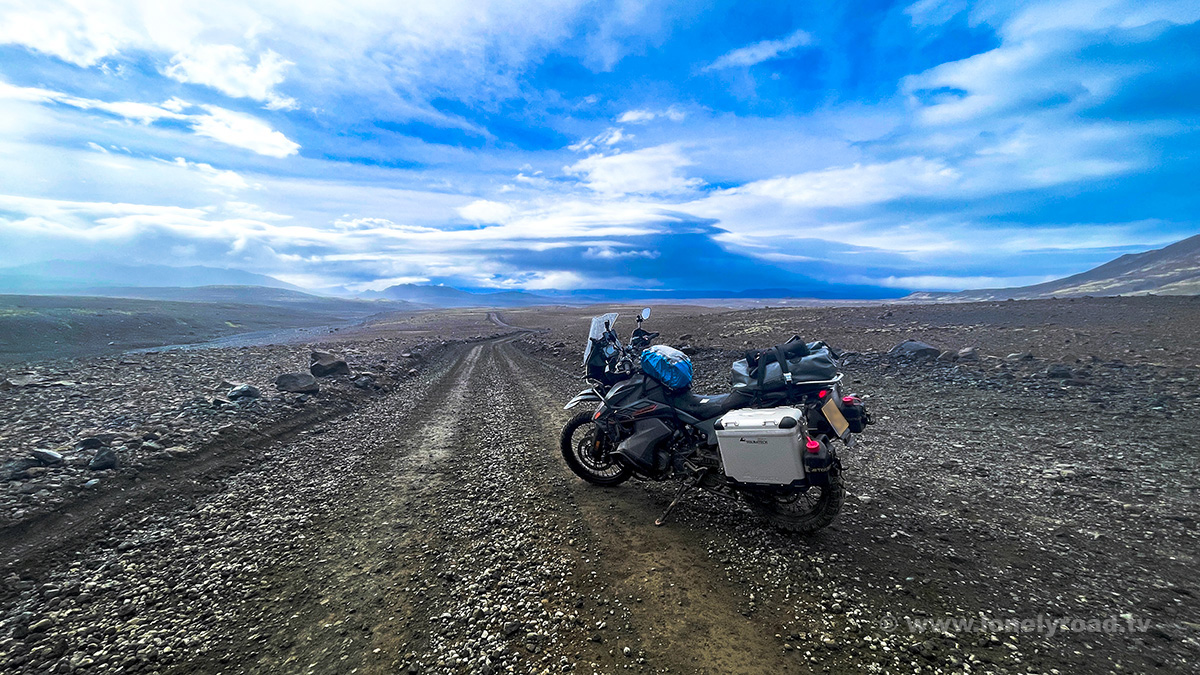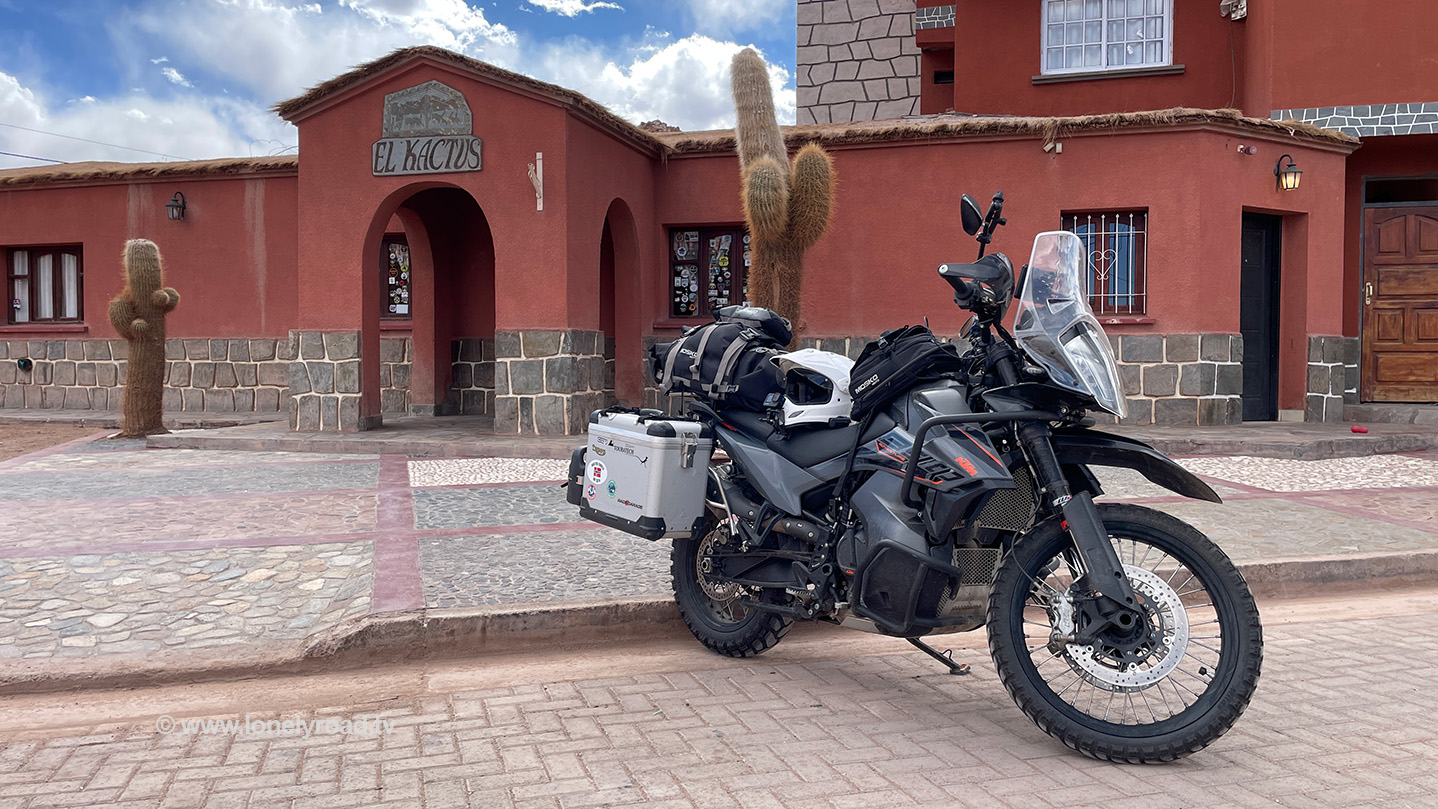Planning an Iceland Motorcycle Adventure

With stunning landscapes, friendly people, abundant offroad riding, and excellent tarmac, Iceland should be high on any adventure rider's list of desirable destinations.
Getting There / Getting a Bike
Getting yourself to Iceland is a simple as jumping on a flight, but having access to a motorcycle once you're there is less straightforward. The arbiter of your ultimate approach will be how much time you have.
For shorter trips, your only real options are to rent or join a tour - and there are plenty of local companies who can help with both. Tours are normally all inclusive and can be tailored for different riding styles and skill levels. Many also provide offroad experiences. Google will be able to oblige if tours are your thing.
Renting is a better option if you prefer your plans a little more freeform, however it's worth noting that most rental companies in Iceland don't allow their vehicles to be taken on the mountain "F" roads (see below). But even limited to the tarmac, there's still plenty to see.
Taking your own bike provides ultimate flexibility to go where you want when you want. If you live in Europe or are on a European leg of a RTW trip, this is best option to maximise your Icelandic experience.
The Ferry
With money to burn, you can simply airfreight the bike to Reykjavik. But a cheaper option is to take the Smyril Line ferry, which leaves from Hirtshals in Denmark and sails to Iceland via the Faroe Islands. The journey takes just over two days and deposits you at the eastern port of Seydisfjordur. If you've got time, you can opt for a stop-over to explore the Faroes, either on the way there or the way back. However, as it's a single ferry that runs Hirtshals-Faroes-Iceland-Faroes-Hirtshals there aren't daily sailings from a given port so you're at the mercy of the schedule.
The onboard experience is modern and pleasant. You have a range of choices for cabins and restaurants. And your bike is safely strapped down in the hold while you relax and enjoy the cruise. Even if you're not getting off in the Faroes, the trip through the fjordic scenery is still stunning.
Money
The currency in Iceland is the Icelandic Krona. It's usually worth having a little cash on hand for emergencies, but Iceland is a largely cashless society, so you won't need much. Card payments are ubiquitous, even for small purchases. As always, it's a good idea to bring several cards just in case one doesn't work for whatever reason. Convert any foreign currency at the airport, on the ferry, or in Reykjavik, as there are few options to do this elsewhere.
Accommodation
Iceland has a well-worn tourist trail so there are plenty of options all over the island. That said, they're not super cheap and tend to get booked out during peak periods (particularly the better value establishments). Booking ahead is usually the best idea as the 'just rock up and find a hotel' approach you can use in many other countries will likely leave you either out in the cold or paying top dollar. Choices range from campsites to high-end hotels, although outside of Reykjavik, most tend to be more midrange in terms of size and facilities. Smaller hotels and B&B-type places are common.
Camping is by far the cheapest option, although you are at the mercy of the weather. If you're planning to do a lot of it, you can save a few krona with a Camping Card. Wild camping is illegal in Iceland so it's necessary to use designated campgrounds. Some campsites also offer small wooden cabins, which can be a cost effective, warmer (and dryer) step between a tent and a full hotel.
Roads
With your own wheels, all of Iceland is at your pleasure. Main roads are usually high-quality and well-maintained, although you will encounter fairly frequent roadworks as the summer maintenance window is short. Minor roads are often gravel, but usually well-groomed unless truly remote.
Undoubtedly the most famous route is the ring road, a 1,300km ribbon of tarmac which circumnavigates the entire island. Around Reykjavik it can be a bit more like a freeway, but in the rest of the country it's simply a decent highway with one lane in each direction (although many single-lane bridges). Parts of the road offer stunning scenery, particularly in the north, northeast, south, and southeast.
Offroad
If you fancy a bit of offroad, the network of mountain or "F" roads (from the Icelandic word for mountain, fjall) will scratch all your itches. These range from fairly gentle dirt tracks, which can be traversed by two-wheel drives, to full-on adventure roads with deep river crossings, rocks, ruts, and steep inclines.
If you're planning to ride F roads, it's essential to research ahead so you can match the road to your skill level (and avoid any river crossings which might require your helmet to have a snorkel). It's also worth being mindful of the weather before heading out. Most F roads are closed in winter for obvious reasons, but 'summer' in Iceland is a relative term so heavy rain and strong wind can arrive with little notice. Aside from a general level of discomfort, these can also cause rivers to swell, making a previously simple crossing far more treacherous. Live road condition information is available from the official IRCA website.
Remember that 'offroad' still means you need to stay on the track itself. Straying into virgin territory may seem appealing, but it's damaging to the environment and highly illegal. Expect an earful from any locals who see you doing it and more serious consequences if they happen to be police officers.
And lastly, as noted earlier, most hire companies do not allow their vehicles (including motorcycles) to be driven on F roads by default. You will normally need explicit permission in your rental agreement for this, so make sure you check before you leave the depot.
Maps
When it comes to mapping, modern GPS devices from the likes of Garmin and TomTom normally include Iceland in their detailed maps for Western Europe. Google Maps and OSM can also be used on your phone, but it's common for there to be no mobile coverage outside of towns (and particularly on F roads). So, you should make sure all your maps support offline usage. Google Maps is also useful for planning, but by far the most complete map is available from map.is. It's only in Icelandic, but easy enough to navigate, and includes many roads that even Google doesn't know about, plus excellent high-res satellite photography.
Petrol
Petrol in Iceland is widely available, although as in all of Scandinavia, not that cheap. But this is less of an issue for motorcycles, as we just don't use that much. Around Reykjavik and in larger towns, you'll find normal petrol stations. Often these have food and coffee, so can be a good refuge if you need to ride out some bad weather.
In smaller towns, mini, automated petrol stations are common. These may only have one or two pumps and are unattended. For these you need to pay by card, and sometimes one card won't work, while another will. Occasionally they can also be out of order, so it's never a good idea to show up running on vapours.
Coverage of petrol stations is generally pretty good across most of Iceland, but you should always do your research to check range before setting out. Areas such as the northeast, southeast, and the Westfjords can have distances where you will run out in the middle of nowhere if you're not paying attention.
Tyres
There's certainly enough tarmac across Iceland not to require anything special tyre-wise. But if your bike supports it, a set of rubber which delivers some offroad capability will certainly help. It's almost guaranteed you'll find yourself traversing gravel at some point; whether it's a country lane or a particularly gnarly section of roadworks. I found that my Mitas E07+ Enduro Trail+ 60/40 tyres were perfect for this trip.
Food
Icelandic food is generally decent, if perhaps nothing to write home about. Plenty of options exist in larger towns, but on the road can be more limited. Prices in restaurants, including fast food, will be higher than you'd like, but Iceland is nowhere near as expensive as places like Norway. If you live in a big European or US city, the prices will only be on the higher end of what you'd pay for something similar at home. You can save a bit of money buying food in supermarkets rather than eating out, but likewise, prices will probably be more akin to the posh supermarkets at home rather than your favourite local discounter.
Safety & Security
Iceland is an incredibly safe country, so there's little to worry about. On the road, you need to keep an eye out for animals in some areas, and also for dumb-arse tourists who are either distracted by the eye-popping scenery or stopped in a terrible location while they try and get selfies.
It's also not necessary to worry about booking accommodation with secure parking, as you often do in other places. As with anywhere, leaving bags unattended and unsecured on your bike probably brings with it a minor theft risk, but the bike itself is incredibly safe.
Biggest Towns
Many towns in Iceland are little more than villages, so services can be limited. Aside from the capital Reykjavik, other large towns include Akureyri (northeast), Egilsstaðir (east), Ísafjörður (Westfjords), Borgarnes (west), Selfoss (southwest), and Vik (south). These are the places you're more likely to find extended services like mechanics, big supermarkets, jet washes, and hardware stores.
Weather
Iceland is located quite far north, so the the summer season is fairly short, running broadly between July and the end of September. August is the peak of the season, so expect the biggest crowds and higher prices. The weather in Iceland can be most delicately be described as 'variable'. In spending a few weeks there, you'll experience everything from glorious blue skies and sunshine, through to subjectively freezing, wet, and dark days. On a bike, you'll definitely need layers - with full waterproofs on the outside, your favourite exterior gear, and a base layer that will keep you warm.
If the sun's out, daytime temperatures can nudge 17C in peak summer, but will more likely hover in the 12-14 degree range unless it's windy and rainy. Obviously temperatures tend to be lower anywhere at altitude. On the south coast, plus some open areas inland, you will also need to deal with particularly strong winds at times. This is fantastic if it's directly behind you, but can be a real slog to ride into, and rather tiring when it's a cross wind. Riding into strong wind will also have a significant effect on fuel economy.
Where to Go
If you're coming with a bike, Reykjavik probably isn't the best place to be spending too much time. It's pretty easy by world city standards, but most of the interesting stuff in Iceland is natural and therefore out in the countryside. You'll find the most tourists in the immediate areas east and southeast of the capital. Further out, you'll still encounter people, but not the tour bus hoards.
The internet is peppered with detailed guides to every corner of Iceland, but as a general overview, in the southwest, the Reykjanes Pennisular is a literal hotbed of volcanic activity; along the south coast, the glacial landscape starts north of Vik. Most of the southeast coast is rugged, remote, and stunning. The northeast is one of the least populated areas and also has some interesting sites, such as Dettifoss, Europe's largest waterfall. Northwest, the Westfjords region is definitely a highlight, as too is its southerly neighbour, the Snæfellsnes Peninsula. And for serious adventurers, any one of the interior F roads will certainly produce some awesome memories.




